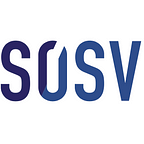A New Solution to the Age Old Convertible Stacking Problem
Stacking of convertible securities is one of the biggest challenges facing early stage companies. Many investors have highlighted the dangers of stacking notes.
Convertible securities are “stacked” when companies fundraise using multiple convertible instruments (sometimes with different capped values) rather than equity fundraising rounds.
The issue with this “stacking” is that founders are left unsure as to how much equity they are eventually giving up. When the notes do ultimately convert, it will hit founders the hardest (because investors do not dilute on subsequent note fundraisings, whereas common equity holders such as the founders do).
Stacking can also cause confusion amongst investors and damage relationships between founders and angel investors, as well as the Series Preferred investors who lead the first priced round into the company.
At SOSV, having completed over 800 investments in the past five years, we strongly encourage our founders to avoid any stacking of convertible instruments where possible. The general recommendation is that founders should aim for a priced round instead of a convertible round.
In reality, avoiding the “convertibles stack” can be a huge challenge for early stage companies, especially those operating in industries that can take a longer time to get any traction. Sometimes the lure of a debt round, often championed as being faster, easier, and cheaper than a priced round, can be difficult for founders to ignore.
Stacking convertibles can lead to a huge shock to the founders, who may not have modelled out the harsh reality of the dilutive impact of convertibles. We have seen many situations where, after a significant number of convertible instruments have been stacked, companies go on to raise a substantial equity funding round at a decent valuation, only to find that after conversion of the loan notes (with some significant discounts) and closing of the equity round, the original founders can be left with less than a 10% combined equity holding on the cap table.
With this in mind, SOSV has drafted the “ETA” (Equity Triggering Agreement) instrument with the aim of allowing founders to have the best of both worlds. The intention of the ETA is to lock down the valuation for early stage companies and to help founders have greater certainty as to their fully diluted position on their cap table. We have also prepared a pro forma worksheet to help play out the potential conversion of the ETA.
Essentially, the aim of the ETA is to allow companies to take advantage of the speed and ease of a convertible round but also allow this to trigger a financing round (most likely a series seed financing round) when the aggregate amount of investment raised exceeds a pre-agreed trigger level (the “Maximum Loan Amount”).
This should give the company, the founders, and the investors in the round much more certainty going forward as all of the dilution will be crystallised as soon as the Maximum Loan Amount is hit and expectations for everyone will be set around valuation.
We hope the ETA will be of assistance to teams, reduce the amount of convertible debt stacked in companies, and avoid shock dilution for founders.
We appreciate your feedback!
